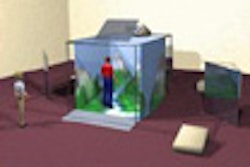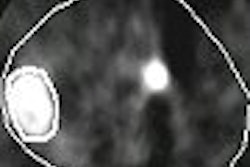It is no secret that radiologic technologists (RT) -- especially those trained in 3D imaging -- are at a premium. With little-to-no formal 3D education available, finding and keeping qualified techs is not only a competitive endeavor but a costly one as well, given that the facilities that hire these RTs are also expected to provide and pay for their training.
This means sending them to vendor training sessions, educational symposia, and clinical fellowships -- all of which can add up. While such investment is certainly worth it in the long run, therein lies the rub: how do you ensure that your 3D techs, once trained, will not jump ship?
"Although the average hospital overall RT vacancy rate has declined from 18% in 2000 to 6.2% in 2006, demand for qualified RTs remains high and shortages threaten to worsen as RT baby boomers retire," said Laura Pierce, manager of the Stanford Radiology 3D Laboratory, at the 2007 International Symposium on Multidetector-Row CT, held in San Francisco in June. "A highly trained 3D technologist will potentially have plenty of other job opportunities."
So what is a hospital or imaging center to do? According to Pierce, one of the most critical elements is in many ways also one of the most obvious: keep your techs happy. Studies have shown that six key factors contribute to job satisfaction: achievement, recognition, the work itself, responsibility, advancement, and growth.
In particular, the challenge of decreased reimbursement can lead to a need for greater individual productivity. "Beware of boredom," she said. "Motivation is key to retention."
Pierce outlined several ways to provide a more stimulating and satisfying work environment for your technologists. For example, providing a continuous learning environment can make them feel more appreciated.
Each facility should have educational subsidies for all radiologic technologists, and 3D technologists should be encouraged to keep current with changing technologies by attending symposia, participating in weekly film reviews and reading sessions, and having access to current literature and reference materials. Listening, showing gratitude, paying attention to ergonomics, and providing the best equipment available can also pay off, Pierce added.
"You want to ensure smooth workflow and a quiet work environment," she said. "Poor technology stunts careers."
Fostering teamwork and assigning new job titles -- such as "3D Imaging Specialist" rather than "CT Tech" -- can also boost morale, she added.
"You need to make your technologists feel valued for their knowledge," Pierce said. "Radiologists are an integral part of the diagnostic team, and they should act as mentors to the 3D technologists. The technologists should not feel isolated from the reading room environment and should know that their work is an important part of the process."
By Kathy Kincade
AuntMinnie.com contributing writer
August 15, 2007
Related Reading
Navigating the economics and billing of advanced visualization, May 17, 2007
Radiologists may be better off taking hands-on approach to 3D workflow, April 30, 2007
PACS, IT help meet changing ultrasound workflow requirements, April 23, 2007
Cardiac CT drives adoption of 3D visualization, March 26, 2007
How to find and train a 3D technologist, June 17, 2005
Copyright © 2007 AuntMinnie.com



















